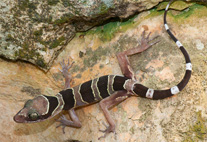Abstract
Spionidae (Polychaeta) collected from seamounts in the Atlantic Ocean were studied. Altogether six species were found of which two are new to science and one belongs to a new genus. Aonidella cf. dayi Maciolek in López-Jamar, 1989 and Glandulospio orestes gen. et sp. nov. were the most common species and occurred on both the Great and Little Meteor Seamount, the Irving Seamount and the Hyeres Seamount. Laonice norgensis Sikorski, 2003 and Malacoceros jirkovi Sikorski, 1992 have a wider distribution in the North Atlantic, including the Mediterranean Sea in case of L. norgensis. Aonides selvagensis Brito, Núñez and Riera, 2006 is only known from the Macaronesian Region. Dipolydora paracaulleryi sp. nov. has been collected from both the Great and Little Meteor Seamounts. All species are compared with morphological similar species and their taxonomy is discussed. Detailed descriptions are provided for the species new to science and descriptions of the previously known species are amended. Accompanying histological studies revealed the presence of very strong dorsoventral musculature in A. cf. dayi and for G. orestes gen. et sp. nov. the presence of glandular organs in the middle body region. Laonice maciolekae Aguirrezabalaga & Ceberio, 2005 was found to be a junior synonym of L. appellöfi Söderström, 1920 and is formally synonymised. Molecular data suggest gene flow between seamounts and autochthonous as well as allochthonous larval recruitment for different species. The results of previous studies by other authors, that polychaete communities of the North Atlantic Seamounts are characterized by low diversity, low rates of endemism, and the predominance of widely distributed (and cosmopolitan) species is not corroborated by our results.

